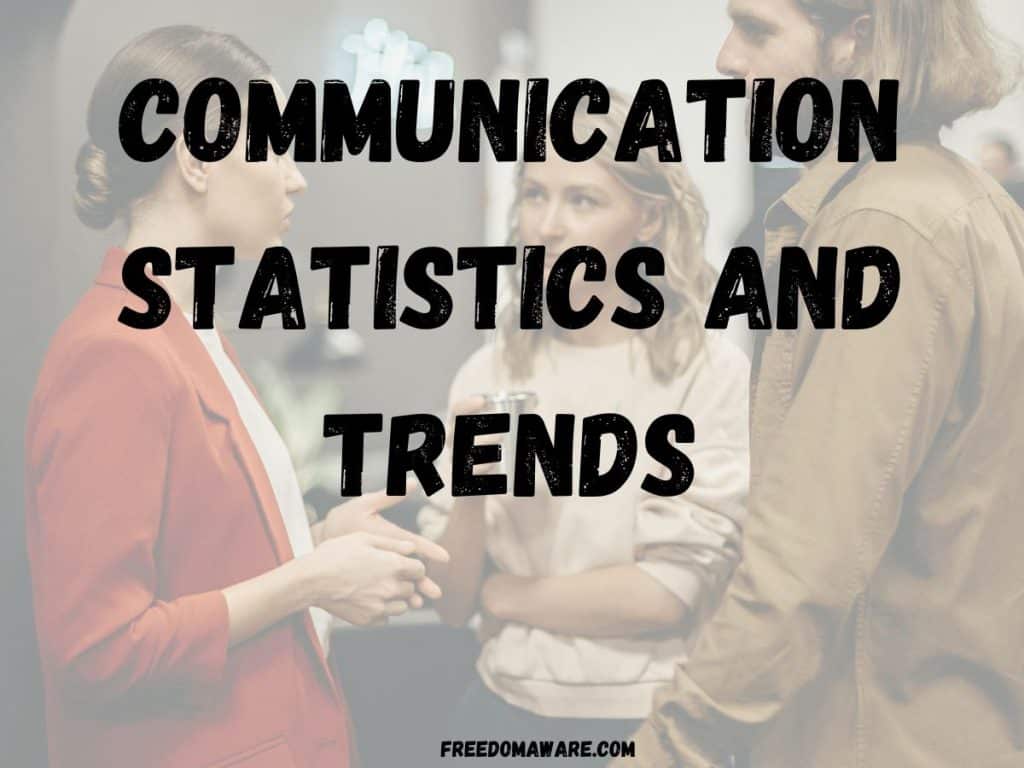
Here are communication statistics and trends to help you in 2024;
Effective communication skills are indispensable in both personal and professional contexts, serving as the cornerstone of successful interactions and relationships. In today’s dynamic and interconnected world, the ability to convey ideas, listen actively, and build rapport has never been more crucial. From the boardroom to the living room, communication skills influence every aspect of our lives, shaping our careers, relationships, and overall well-being.

In this article, we delve into the realm of communication skill statistics, exploring key findings, trends, and insights that underscore the importance of effective communication in various spheres. From the impact of communication skills on employment to the prevalence of public speaking anxiety, we uncover the numbers behind the power of communication and its transformative effects on individuals and organizations alike. Join us as we navigate through the top communication skill statistics, shedding light on the vital role of communication proficiency in today’s fast-paced world.

Undoubtedly, the landscape of business is undergoing rapid transformation, characterized by unprecedented volatility. This turbulence is largely fueled by rapid technological advancements and the expanding global marketplace. Consequently, businesses are compelled to overhaul their strategies to retain competitiveness amidst such uncertainty.
One area that has emerged as a focal point for adaptation is communication skills. In today’s dynamic and competitive business environment, effective communication holds more significance than ever before.
Communication serves as the bedrock of any thriving business. Irrespective of role or department, every employee’s proficiency in communication directly impacts the company’s performance and productivity. Source
In this article, we embark on a journey to master the art of effective communication. We’ll delve into the latest communication skills, statistics, and trends, ensuring you remain abreast of this pivotal area vital for the success of your business endeavors.
WHAT IS COMMUNICATION IN BUSINESS?
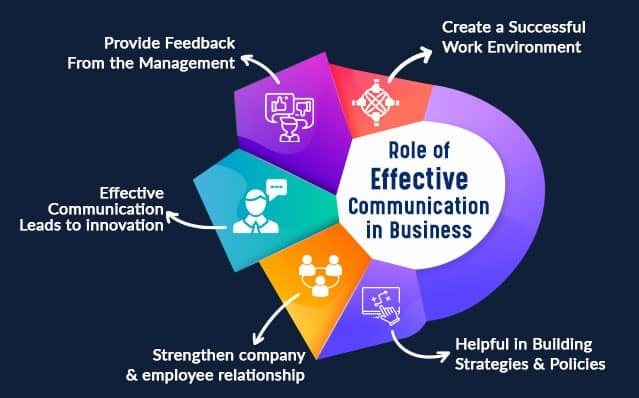
Communication in business encompasses the exchange of information, ideas, and messages between various stakeholders within an organization, as well as with external parties such as customers, suppliers, partners, and other relevant entities. It involves conveying thoughts, instructions, feedback, and updates through verbal, written, or non-verbal means to facilitate understanding, collaboration, and decision-making processes. Effective communication in business plays a pivotal role in fostering teamwork, enhancing productivity, building relationships, resolving conflicts, and ultimately achieving organizational goals and objectives.
According to source Communication is fundamental to the existence and survival of humans as well as to an organization. It is a process of creating and sharing ideas, information, views, facts, feelings from one place, person or group to another. Communication is the key to the Directing source
Understanding the Importance of Communication in Business
For business owners and leaders, the significance of communication cannot be overstated. Effective communication serves as the linchpin of success, facilitating smooth operations across all facets of the organization.
Whether it’s interaction with employees, customers, or suppliers, adept communication is paramount for maintaining operational efficiency and harmony. Regardless of the size of the business, robust communication practices ensure that everyone is aligned and working towards shared goals.
Moreover, fostering good communication fosters strong working relationships, bolsters morale, and enhances productivity within the workforce. By promoting open and transparent communication channels, businesses can cultivate a positive work environment conducive to collaboration and innovation.
In today’s dynamic workplace, there are myriad communication channels available, ranging from face-to-face meetings and conference calls to group emails and instant messaging platforms. The key lies in selecting the most appropriate communication method for each situation, ensuring clarity and effectiveness in conveying information.
Ultimately, recognizing and prioritizing effective communication in business operations is essential for driving success and achieving organizational objectives.

General Communication Statistics
- According to a report from the National Association of Colleges and Employers, communication skills rank highest among the sought-after qualities by employers when hiring new talent, scoring an impressive 4.56 out of 5 on the importance scale. Source
- In the IT services industry, 57% of surveyed security professionals cited communication skills as the most essential soft skill required by their companies. Source
- In the United Kingdom, the information and communication industry employed over 1.7 million individuals, underscoring its significant contribution to the workforce. Source
- Business communication predominantly relies on in-person interaction, accounting for approximately 23% of communication time. Source
- Nonverbal communication constitutes a substantial portion of effective communication, comprising approximately 93%, while spoken words only represent 7% of the message. Source
- Poor communication practices cost UK and US companies an estimated $62.4 million annually, resulting in productivity losses for 100,000 employees. Conversely, organizations with effective communication strategies enjoy 50% higher total returns. Source
- Silent cues, including facial expressions, posture, gestures, tone of voice, and underlying emotions, contribute significantly to effective communication, constituting approximately 93% of the message. Source
- Training in communication skills can enhance the self-efficacy and performance of health professionals, emphasizing the importance of effective communication in the healthcare sector. Source
- A significant proportion (32%) of professionals reported facing challenges in effective communication with clients and coworkers over the past 12 months, reflecting the ongoing need for improvement in communication practices. Source
- Specificity is paramount in workplace communication to ensure effectiveness and clarity in conveying messages and instructions. source
- The 7-38-55 communication rule underscores the significance of nonverbal communication elements, with 7% attributed to the actual message, 38% to tone of voice, and 55% to body language. source
- According to research findings, individuals retain approximately 10% of information they read, 20% of what they hear, 30% of what they see, 50% of what they both see and hear, 70% of what they say and write, and a staggering 90% of what they actively engage in or do. source
- According to research conducted by Mitel, communication inefficiencies globally consume an average of 13% of an employee’s day. Source
- Inadequate communication and collaboration solutions have been projected to incur significant costs for UK businesses, averaging £7,675 per employee annually. According to the survey findings, over a third of the typical UK office worker’s salary is squandered due to these inefficiencies. Source
- According to research by Salesforce, 86% of both employees and corporate leaders attribute workplace failures to ineffective communication. Source
- Similarly, findings from the Economist Intelligence Unit source highlight how poor workplace communication can hamper company performance, resulting in:
- 52% increased stress for employees
- 44% failure to complete projects
- 31% decrease in employee morale
- 25% missed performance goals
- 18% loss in sale
- An impressive 97% of employees acknowledge the profound influence of team alignment on the success of a project, underscoring the pivotal role communication skills hold in the corporate realm. Source
- In 2024, 55% of individuals opt to communicate with their clients via email. Source
- The percentage of individuals predominantly utilizing a project management tool for client communication has increased from 11% in 2023 to 19% in 2024. Source
- In 2024, 11% of individuals opt to communicate with their clients using online chat tools, such as Slack. Source
- Approximately 54% of respondents in a global survey reported that the COVID-19 pandemic prompted them to enhance their focus on both omnichannel and multichannel digital communication within their companies. Additionally, 53% stated that they introduced new channels for digital communications. Source
- In the United States, 76% of surveyed respondents indicated that they utilized email or other messaging services for communication purposes. Source
- The global communications market amassed a staggering $1.37 trillion in revenue in the year 2021. Source
- Approximately 65.7% of the world’s population, roughly equivalent to 5.3 billion individuals, are Internet users, with 61.4% actively engaging on social media platforms. Source
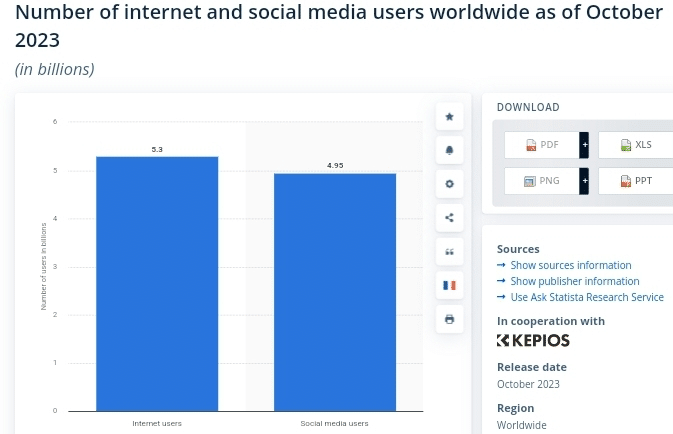
- In the current landscape, 26% of individuals utilize an online chat tool like Slack, which marks a slight decrease from the 30% reported last year. Meanwhile, 24% opt for a project management tool, showing a notable increase from the 15% reported a year ago. Source
- 7% of respondents maintain primary communication via phone, consistent with figures from the previous year. However, the proportion of individuals primarily engaging in face-to-face communication has declined from 7% to 3%. Source
- An additional 10% of respondents stated that they utilize a tool not included in the aforementioned categories. This diverse range of tools includes Notion, WhatsApp, Google Meet, and Zoom, among others. source
- 86% of both employees and executives attribute workplace failures to either a lack of collaboration or ineffective communication. source
- 67% of managers express discomfort with face-to-face communication when interacting with employees. Source
- 10% of workers indicated that they utilize a tool other than email, with a diverse array of options such as Notion, WhatsApp, and video conferencing platforms like Zoom and Google Meet being mentioned. Source
- 33% of the entire workforce identify the lack of transparency in internal employee communications as a problem. source
- employees who engage in regular communication with each other demonstrate higher levels of productivity. This was clearly illustrated in a previous McKinsey report, indicating that cohesive teams experience a productivity surge of 20–25%. Source
- Individuals who incorporate emojis into workplace communication are perceived as more amicable. source
- As per research conducted by the US firm Gartner, inadequate communication accounts for 70% of corporate errors. Source
- 28% of employees cite inadequate communication as the primary reason for their inability to meet deadlines. Source
Statistics on Workplace Communication Media
- A majority, or 56%, of Chief Communications Officers (CCOs), report an uptick in their utilization of communications technology. Source
- 62% indicate a heightened emphasis on employee communication, with 54% identifying employee communication as one of their top five talent investment areas in the foreseeable future. source
- Over the past two decades, there has been a notable surge in the time allocated to communication tools such as calls and emails, with an increase ranging from 20% to 50% to enhance employee communication. Source
- A significant 85% of employees acknowledge using more than one device for communication purposes in the workplace. Source
- Among surveyed employees, 44% primarily utilize computers as their communication devices, while 36% rely on smartphones for communication. Source
- Phone calls emerge as the predominant communication medium in the workplace, with over 95% of surveyed workers indicating their reliance on phone calls for workplace communication. Source
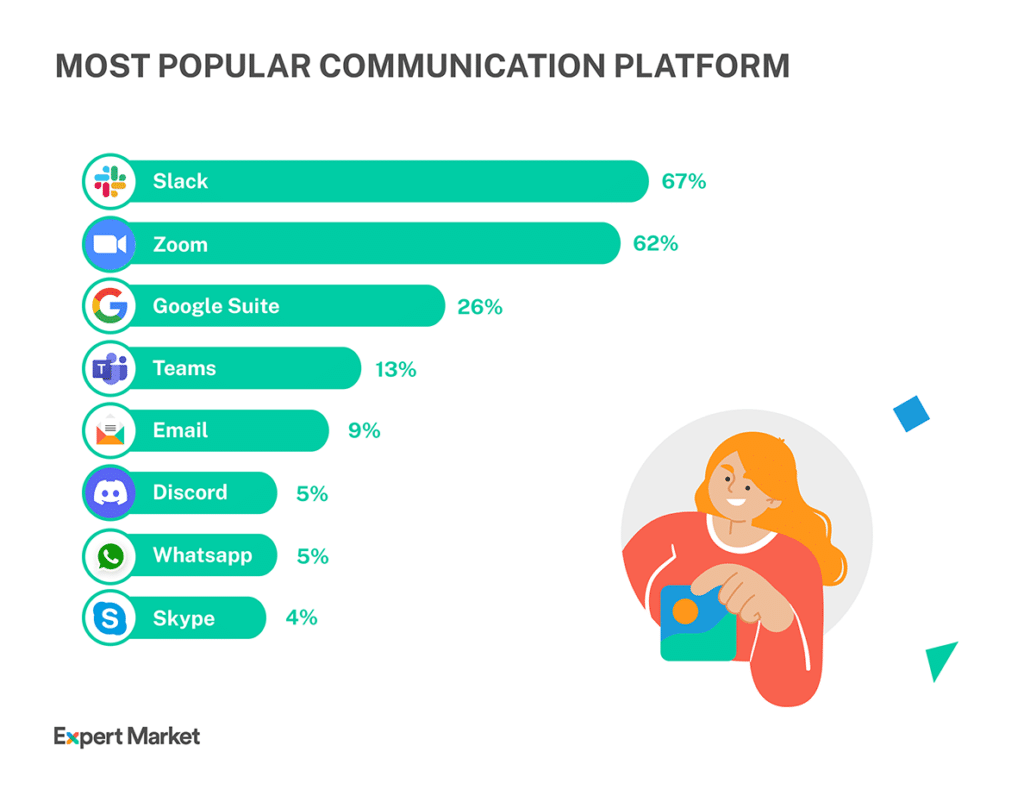
- Amid the Covid-19 lockdown, approximately 81% of adults engaged in remote work reported employing video calling or conferencing tools to maintain communication with their companies, with 63% expressing satisfaction with the time invested in these online communication platforms. Source
- More than 75% of employees exhibit a preference for watching videos over reading text or emails. Source
- Despite the staggering volume of over 269 billion emails transmitted worldwide daily, busy workers open only 24% of these emails on average. Source
- A substantial 86.5% of workers disclose their usage of video calls for workplace communication, with 55% among them employing video calls on a daily basis. Source

Statistics On Poor Communication In The Workplace
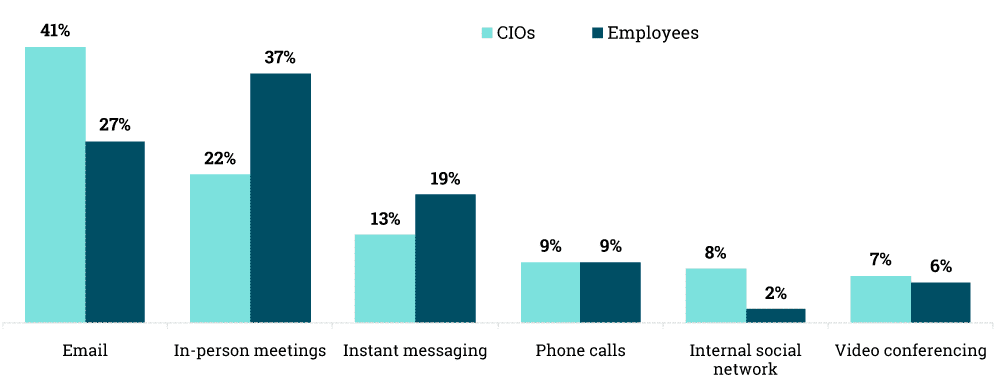
- A significant 86% of surveyed workers report encountering communication challenges, despite devoting half of their workweek to communication tasks. Source
- 69% of employers and business executives reportedly struggle with organizing communication with their employees. source
- A significant 86% of surveyed workers report encountering communication challenges, despite devoting half of their workweek to communication tasks. Source
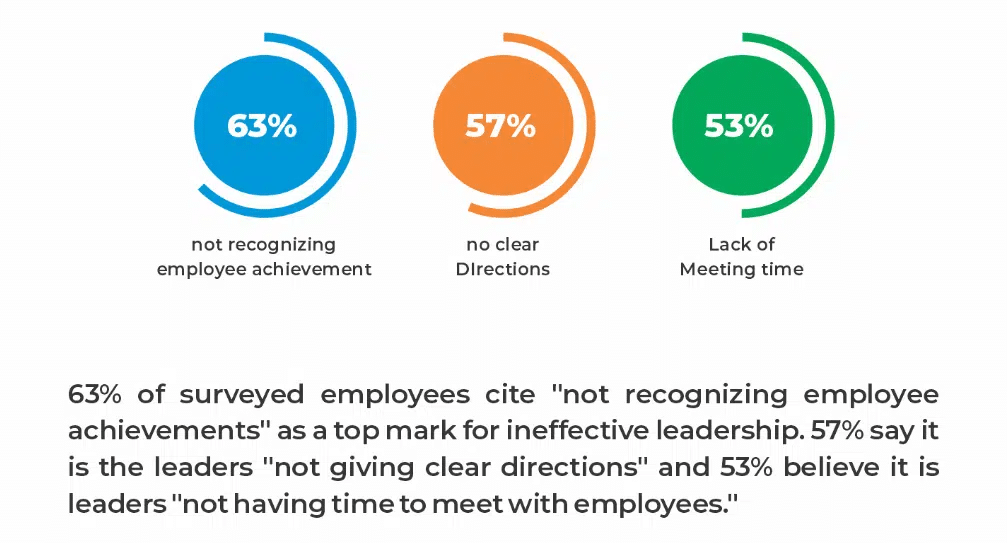
- In the United States, 40% of millennials reveal using email as their primary mode of communication with customers. Source
- 63.3% of over 600 surveyed organizations assert that retaining employees poses a greater challenge than hiring them, primarily attributed to inadequate workplace communication. Source
- Approximately 63% express willingness to leave their current job due to frustration with their companies’ communication practices. Source
- Among surveyed employees, 63% identify “failure to recognize employee achievements” as a primary indicator of ineffective leadership, followed by 57% attributing it to “ambiguous directions from leaders,” and 53% pointing to “leaders’ lack of availability for meetings with employees”. Source
- According to a survey, 91% of employees identify effective communication as a critical skill lacking in leaders, a deficiency that undermines employee engagement. Source

- Inadequate information exchange in the workplace contributes to employee frustration and can result in a 5% decline in performance, translating to a reduction of $32.5 million from a $1 billion top line. Source
- Roughly 80% of workers concur that ineffective or poor communication induces stress, with 36% reporting instances of being adversely affected by such communication breakdowns. Source
- The cost of ineffective workplace communication in the United States has surpassed $1.2 trillion and is projected to escalate further without intervention. Source
- A survey of 400 large-scale companies revealed an average annual loss of $62.4 million per company attributable to poor communication, while smaller companies typically experience losses of up to $420,000 annually. source
- Over 70% of corporate errors are attributed to poor communication in the workplace. Source
- 36% of individuals report being office-based for all five weekdays, while a collective 44% divide their time between remote and office work, with 20% exclusively working remotely. source
- People simply prefer videos. Forrester Research indicates that employees are 75% more inclined to watch a video than to read documents, emails, or web articles. Source
Statistics on Challenges in Workplace Communication
Remote work continues to present a challenge to effective workplace communication. With many individuals working remotely, they often find themselves isolated and disconnected from their projects.
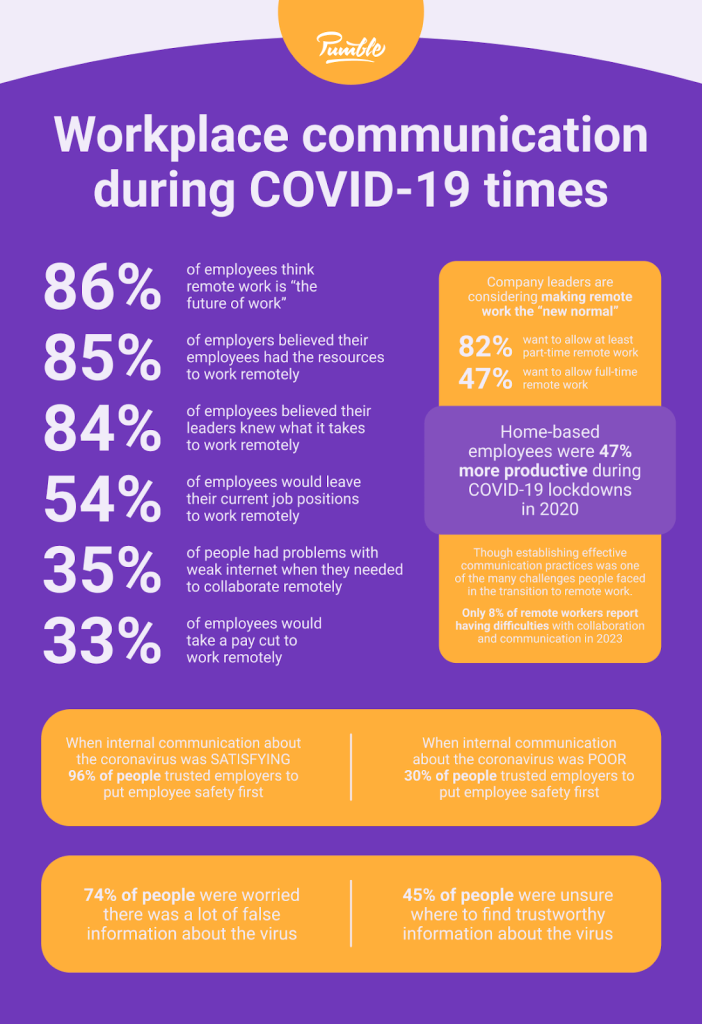
- After the post-COVID-19 lockdown, approximately 32% of workers find communication to be significantly more challenging in the past year. However, 18% perceive communication to have become easier. Source
- Sixty percent of employees express the feeling that they squander time during company meetings, resulting in their lack of full engagement. Source
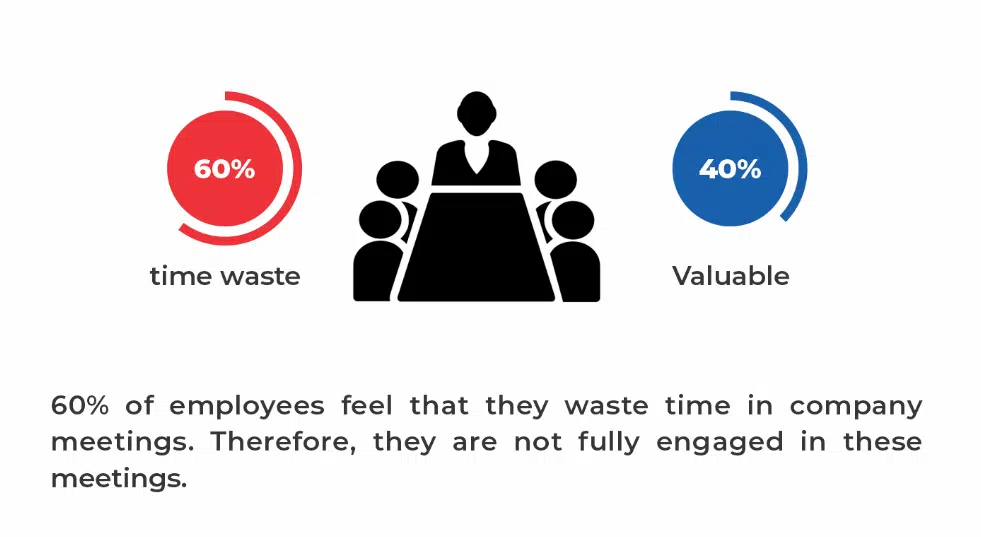
- Workplace frustration escalates as employees dedicate over 2.5 hours daily to searching for essential information. Source
- 30% of individuals perceive communication with clients and colleagues as increasingly challenging over the past 12 months. Source
- 48% of individuals indicate that the challenge remains unchanged, while only 23% feel that things have become easier. source
- Approximately 63% of workers have missed essential information that was sent to a colleague’s inbox while the colleague was absent. source
- Merely 6% of communication leaders express confidence in managing employee change fatigue, despite their pivotal role within organizations. Source
- 39% of employees are found sleeping during company meetings, while 73% are typically engaged in other work tasks. source
Statistics on Employee Engagement in Internal Communication
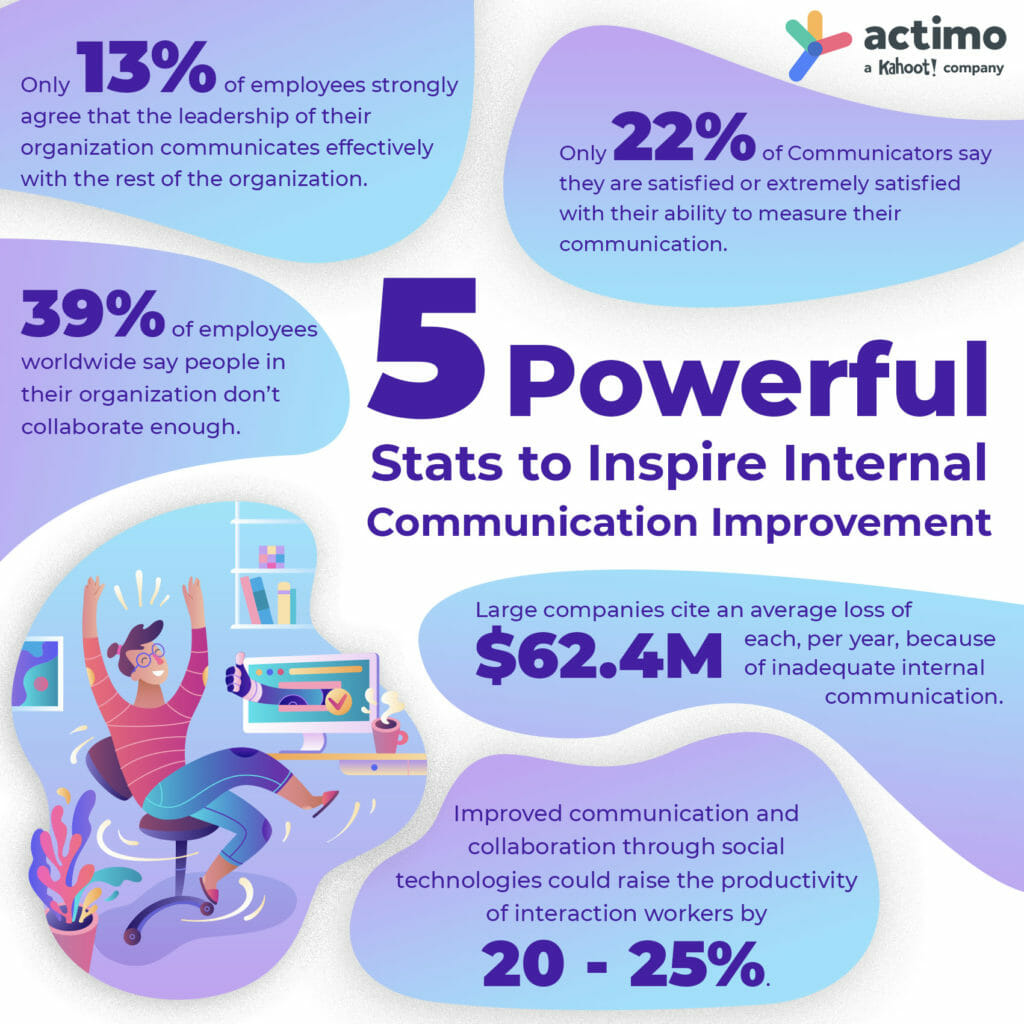
- Improved communication and collaboration through social technologies could raise the productivity of interaction workers by 20 – 25 percent. Source
- According to 37% of over 1300 surveyed respondents, the most significant challenge in internal communication is employee disengagement. Source
- 68% of employees report that the pandemic has enhanced internal communications within their organization. Additionally, 85% of employees feel a stronger sense of connection when effective communication is present. This heightened connection correlates with an 18% increase in productivity and sales. Source
- While 85% of company leaders acknowledge that employee engagement is a top priority, only one-third of them have actually prioritized it. Source
- Other sources state that companies with engaged employees outperform those without by 202%. And having an effective internal communications strategy brings 47% higher returns to stakeholders. Source

- In a survey, 44% of business executives believe their company can maintain employee engagement during Covid-19. However, only 25% of employees agree with this assertion. Source
- Poor internal communication strategies result in 55% of employees spending more time at work than necessary. Source
- Research indicates that 60% of business organizations lack a long-term internal communication strategy. Among the remaining 40% that do have such a strategy, approximately 12% do not measure its effectiveness. Source
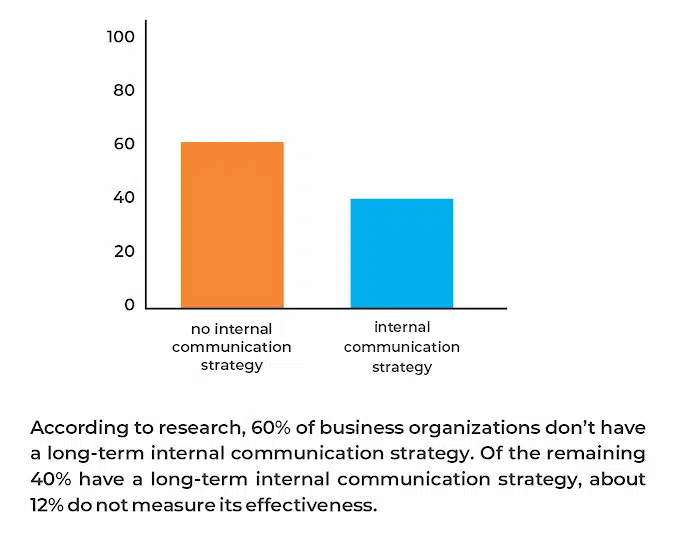
- source suggests that this figure is actually five hours per day, and they note an 88% year-over-year increase in the time spent watching videos.
Corporate Communication Statistics
Effective communication is crucial for the success of any business. It fosters understanding among employees, helps resolve conflicts, and boosts productivity. Conversely, poor communication can lead to confusion, decreased morale, and reduced productivity. Here are some insightful statistics and facts regarding corporate communication:
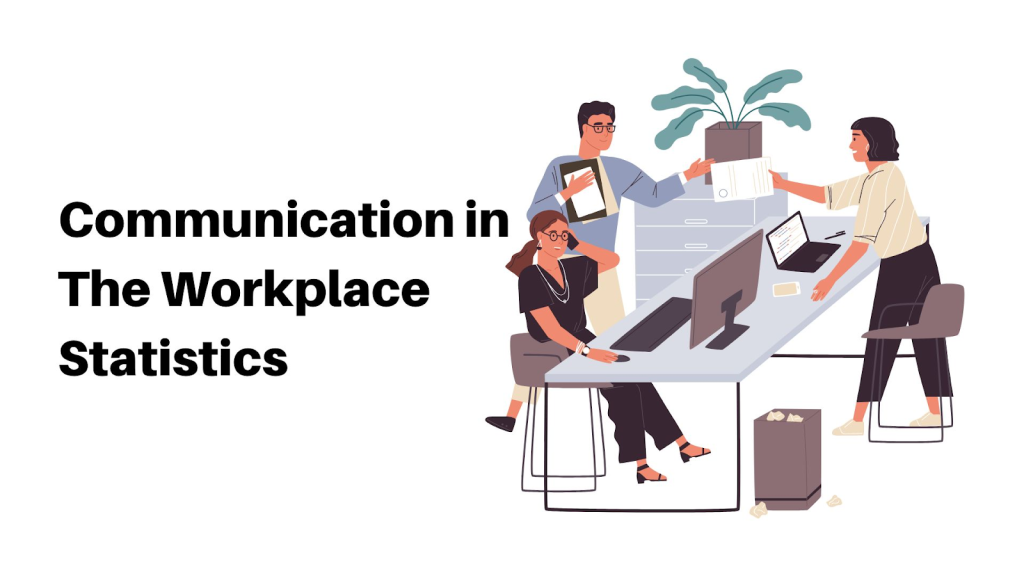
- Feedback plays a crucial role in employee engagement, as those who receive positive feedback are 3.9 times more likely to be engaged than those who feel ignored. Source
- Email remains the preferred mode of communication for 62% of professionals, surpassing phone calls and face-to-face meetings. source
- Effective communication fosters trust, with 74% of employees preferring to work for trustworthy employers. Source
- Employees whose voices are heard are 4.6 times more likely to increase their productivity. Source
- A staggering 96% of employees believe that empathy is essential for employee retention. Source
- Only 21% of employees are engaged at work, highlighting the correlation between employee disengagement and poor workplace communication. Source
- Despite the importance of engagement, 65% of the U.S. workforce reports feeling disengaged at their workplace. Source
- A study by Gallup reveals that teams with high engagement levels experience a 23% increase in profitability. Source
- Companies that communicate with innovation, courage, and discipline, especially during economic challenges and change, are more effective at engaging employees and achieving desired business results. Source
- According to Gallup’s survey, employees who have a best friend at work are seven times more likely to be engaged. Source Enhanced communication improves employee retention.
The phenomenon known as the Great Resignation has been substantiated by
- Microsoft’s 2022 Work Trend Index, revealing that 43% of employees are considering job changes in 2023. This sentiment is particularly pronounced among Gen Z workers, with 58% contemplating a switch.
- Gallup’s latest report underscores this trend, indicating that 59% of workers are quietly quitting, while 23% feel they are thriving at work, and 18% are loudly quitting, directly hindering their company’s objectives.
This wave of resignations mirrors the trends seen in 2021 and 2022, with millions of workers leaving their jobs.
- SHRM notes that 40% of US workers were actively seeking new employment in 2021, a figure expected to rise to 51% this year.
- A survey of 50,000 employees across 59 global organizations revealed that engaged employees are 87% less likely to leave their organization.
- Similarly, highly engaged employees were found to be far less inclined to leave their companies compared to their disengaged counterparts. Thus, fostering engagement through robust communication practices is likely to enhance employee retention rates. Source
Facilitating trust is a key function of effective communication.
- In a workplace trust report published by the Workforce Institute at UKG, 74% of employees express a preference for working under an employer they deem trustworthy.
- A significant majority, reaching 63% of surveyed business leaders and employees, expressed the view that trust should be acquired through actions rather than assumed outright. This perspective was particularly prevalent in India, with 90% of respondents concurring, while in Mexico, the sentiment was less widespread, with only 37% of professionals sharing the same belief. Source The Workforce Institute at UKG found that diminished trust within the workplace has a notable impact on employee performance. Their study revealed that:
- 22% of respondents in the survey cited refraining from making referrals due to a lack of trust in their company. Source
- 24% decided to leave a company because they didn’t feel trusted by their employer. Source
- Additionally, a significant 68% expressed that low trust negatively affected their daily effort and productivity. source
- To be perceived as trustworthy by their manager, an employee would not only need to excel as a good (54%) and dependable (48%) worker overall but also demonstrate honesty (36%) and engage in active listening (28%).
- On the flip side, employees prioritize managers who are dependable (52%) and honest (34%), along with those who can provide constructive feedback (25%).
- Ultimately, the absence of transparent and sincere communication that fosters trust tends to negatively impact employee morale. This is evidenced by the feedback from a third of employees who participated in an Accountemps survey.
Statistics regarding the most utilized languages in business communication Verbal and written communication are undeniably crucial in workplace settings and beyond. As more companies expand globally, the question arises about selecting a language suitable for communication within international teams.
While communication is straightforward when all team members share the same native language, it becomes more complex in multicultural teams where choosing a language that ensures everyone feels comfortable communicating is essential.
Business languages for global teams
Business languages for global teams are increasingly crucial in today’s corporate landscape. According to a 2018 survey cited by the Harvard Business School, a staggering 89% of employees are part of at least one global team, with 62% of corporate workers collaborating with colleagues from three or more different cultures.
Given this trend, proficiency in at least one international business language has become essential. In 2018, Alexika compiled a list of the ten most valuable business languages worldwide, considering factors such as the percentage of world Gross Domestic Product (GDP) and GDP in $US billions. However, as of 2023, the landscape has evolved, with language rankings based on an analysis of GDP figures from 2019 to 2021, as per the UN’s data. Additionally, the table below provides insights into the global speakership of these languages, sourced from ethnologue.
| Language | GDP in $US millions | % of world GDP | Number of worldwide speakers |
| 1. English | 23.94 | 27 | 1.456+ billion |
| 2. Chinese | 16.54 | 18 | 1.35+ billion |
| 3. Spanish | 6.99 | 8 | 559+ million |
| 4. Japanese | 5.01 | 6 | 123+ million |
| 5. German | 4.91 | 5 | 133+ million |
| 6. French | 3.44 | 4 | 309+ million |
| 7. Arabic | 2.43 | 3 | 372+ million |
| 8. Italian | 2.18 | 2 | 67+ million |
| 9. Portuguese | 1.95 | 2 | 263+ million |
| 10. Korean | 1.86 | 2 | 609+ million |
Despite Russian and Hindi falling outside the top 10, they still maintain significant importance in the professional sphere, as do Dutch, Turkish, and Malay-Indonesian languages, which are part of the top 15 business languages in 2023.
Various countries have their own sets of business languages that they prioritize or intend to prioritize in the future. For instance, let’s examine the United States and the United Kingdom as examples.

Current Trends in Workplace Communication for 2024
Thanks to the impact of the Covid-19 pandemic, numerous aspects of the business landscape have undergone significant transformations, and the corporate sector is no exception. With a growing number of individuals embracing remote work, workplace communication dynamics are evolving.
To optimize productivity and foster effective collaboration, executives and internal communicators are actively refining their communication strategies. Recognizing that effective communication is pivotal for enhancing employee engagement, teamwork, and overall outcomes, organizations are prioritizing this aspect of their operations.
The key question now becomes: “How can communication strategies be enhanced to accommodate both remote and in-office employees?”
The solution lies in embracing the latest trends in workplace communication. Keeping abreast of these developments is essential for nurturing positive employee relationships and ensuring effective internal communication remains a cornerstone of organizational success.
- Enhancing Communication Among HR Leaders
- A significant internal communication trend poised to shape 2024 is the imperative to elevate the communication proficiency of organizational leaders, particularly within the Human Resources (HR) domain.
- Given HR’s pivotal role in managing all aspects related to employees, there is a heightened emphasis on cultivating more adept communicators within this sphere. This imperative is accentuated by the myriad changes and challenges brought about by the pandemic, necessitating clearer and more effective communication channels.
- In adapting to a hybrid working model, internal communicators and HR professionals are tasked with devising strategies for disseminating information effectively. This includes embracing innovative technologies to facilitate more personalized, targeted, and immersive communication experiences.
- The establishment of a centralized communication platform emerges as a crucial requirement to address the evolving needs of the workforce. Recognizing the potential for improvement, a significant proportion of employees express a desire for enhanced communication efforts within their organizations.
2. Email Remains a Vital Channel for Workplace Communication
Contrary to widespread assumptions, email communication remains vibrant and relevant in the modern workplace, showing no signs of decline. While it’s true that some employees may overlook their work emails, a significant portion still prefers receiving essential company updates via this medium.
Many employees dedicate considerable time to managing their email correspondence, underscoring its enduring importance as a communication tool. Embracing a multi-channel approach, organizations strive to engage with employees across various platforms, with email retaining its prominent role.
However, it’s crucial to discern when email is the appropriate medium for conveying information. Urgent updates or real-time interactions, for instance, are better suited for alternative channels like instant messaging or video conferencing, underscoring the need for discernment in communication strategy.
3. Internal Communication Shifts Towards a Hybrid or Remote-Friendly Model
As workplaces embrace remote and hybrid setups, traditional methods of internal communication are being reevaluated for their effectiveness. With employees dispersed across various locations, relying solely on a single communication channel proves inadequate.
To adapt, internal communicators and HR teams are devising strategies to disseminate information efficiently regardless of employees’ locations. This entails leveraging a diverse array of communication channels, including:
- Intranet platforms tailored for employees
- Dedicated employee apps for seamless access to information
- Microsoft Teams’ communication channels, particularly favored by project managers
The shift towards a multi-channel approach underscores the need for internal communicators to ensure information reaches employees effectively, irrespective of their work settings.
C-suite Executives Emphasize Workplace Communication
CEOs are now taking proactive steps to enhance communication within their organizations and prioritize the well-being of their employees. A communication report by Edelman highlights the growing significance of communication for C-suite executives.
Traditionally, CEOs have been perceived as distant and less engaged with their employees. However, there has been a notable shift as they are increasingly embracing openness and actively communicating with their workforce.
This emerging trend is particularly beneficial given that CEOs play a pivotal role as organizational communicators. By fostering open dialogue and engagement, they cultivate trust, loyalty, authenticity, and transparency among employees.
Enhanced Utilization of Employee Engagement Automation Tools
The detrimental impact of inadequate workplace communication on employee engagement is evident.
Through the integration of engagement automation tools, internal communicators can efficiently evaluate the efficacy of the organization’s communication strategies.
Platforms such as Kudos, Peakon Engage, and Fellow enable the HR team to administer regular and user-friendly surveys to employees, providing valuable insights into team communication and employee satisfaction.
These tools facilitate the establishment of employee objectives, analysis of reports, and assessment of employee engagement levels and net promoter scores (eNPS).
Moreover, the rising adoption of employee engagement tools is attributed to their ability to facilitate executive recognition and appreciation of employees.
As indicated by earlier statistics, many employees feel demotivated by the absence of acknowledgment or recognition from their superiors. Fortunately, with leading employee engagement platforms, employees can feel valued and acknowledged.
Increased Emphasis on Analytics in Workplace Communication
A notable trend in contemporary workplace communication is the heightened emphasis on analytics. Leaders now recognize that devising an effective communication strategy hinges upon a thorough understanding of communication analytics.
There exists a compelling need for insightful and precise methods to gauge communication effectiveness. Consequently, more businesses are seeking robust data and information to fortify their strategies. As a result, internal communicators must actively compile the outcomes of their communication endeavors to monitor their progress.
Fortunately, numerous online tools are available to facilitate the gathering of metrics. These tools enable the collection of continuous and accurate feedback through quizzes, forms, surveys, and social feeds. Such feedback mechanisms provide dependable and valuable sources of data.
Continuous Demand for Enhanced Information Sources. Amidst the pandemic, internal communicators assumed a pivotal role in fostering trust by disseminating valuable information. Navigating the evolving guidelines, communicators meticulously curated reliable information for employees, a responsibility that remains significant today.
No longer is information disseminated from arbitrary sources; each tidbit of company information undergoes rigorous verification processes. This meticulous approach fosters trust among employees, ensuring the reliability and credibility of the information conveyed.
Frequently Asked Questions About Workplace Communication
- How to Gauge Effective Workplace Communication?
Assessing the effectiveness of workplace communication involves various methods. One approach is to monitor open email rates using tools like ActiveCampaign. Additionally, conducting employee surveys, analyzing intranet data, observing turnover rates, and evaluating work performance are essential indicators.
Moreover, managers can utilize management discussion boxes, organize focus groups, and implement suggestion boxes to gather valuable feedback and insights from employees, aiding in the assessment of communication strategies.
- What are the Methods of Workplace Communication?
Workplace communication encompasses several modes for transmitting information within a professional environment. These methods include:
Verbal communication: Involves one-on-one discussions, group conversations, presentations, speeches, and videoconferencing.
Non-verbal communication: Includes gestures, facial expressions, body language, eye contact, and tone of voice.
Written communication: Utilizes internal letters, emails, periodic newsletters, social media platforms (for fostering interpersonal connections among staff), and instant messaging.
Visual communication: Incorporates data visualizations, images, videos, and graphical representations.
- How Can You Address Communication Challenges in the Workplace?
Addressing communication issues among colleagues is crucial for maintaining productivity within a company. Here are steps to solve these problems:
- Identify the root causes of ineffective communication and brainstorm potential solutions.
- Create a supportive environment where employees feel comfortable sharing their thoughts and ideas, regardless of their department or position.
- Establish clear and consistent communication channels to streamline information flow within the organization, avoiding confusion caused by an excessive number of channels.
- Implement a structured communication protocol that designates specific individuals responsible for disseminating information through designated channels.
- Schedule regular meetings to monitor progress, discuss challenges, and adjust strategies as needed.
- Actively solicit feedback from employees to ensure effective two-way communication, fostering engagement and collaboration.
- Evaluate and upgrade communication tools to align with the organization’s needs and preferences, prioritizing platforms that facilitate group discussions and collaboration over traditional emails.
- Why Non-verbal Communication Matters in the Workplace
Effective communication is paramount for the success of any business, whether it’s conveyed verbally or nonverbally. Studies reveal that a significant portion—ranging from 70% to 93%—of communication is nonverbal. Nonverbal cues are instrumental in conveying understanding and attitude to supervisors, colleagues, and clients alike.
Often, actions and reactions can convey messages more powerfully than words alone. Nonverbal communication encompasses various aspects, including body language, appearance, and posture.
Facial expressions and gestures are examples of nonverbal cues that can convey meaning without the need for spoken words. These cues play a crucial role in helping others comprehend your message and gauge your emotional state, fostering effective communication and interaction in the workplace.
- Identifying the Root Causes of Ineffective Workplace Communication
Poor communication within a workplace often stems from various sources, leading to misunderstandings or miscommunication. These issues may arise from:
Inadequate Writing Skills: Poorly articulated messages or unclear written communication can lead to confusion among team members.
Language Misinterpretation: Differences in language proficiency or cultural backgrounds can result in misunderstandings when individuals interpret messages differently.
Ineffective Communication Tools: The reliance on inefficient or unsuitable online communication platforms may hinder effective information exchange and collaboration.
Management Shortcomings: Poor leadership and management practices contribute significantly to communication breakdowns. Many employees express dissatisfaction with leaders who fail to communicate effectively or maintain regular contact with their teams.
Lack of Engagement from Superiors: Employees often feel disconnected when their superiors fail to engage with them regularly. This neglect can lead to a lack of access to vital information and contribute to misunderstandings within the workplace.
- Impact of Communication Deficiency on the Workplace
Insufficient communication within a workplace has significant repercussions, as highlighted by workplace communication statistics. Beyond inducing stress, inadequate communication adversely affects various aspects of company operations, leading to:
Heightened Conflict: Inadequate communication often fosters misunderstandings and disagreements among team members, resulting in frequent conflicts.
Diminished Collaboration: Poor communication hampers effective teamwork and collaboration, hindering the achievement of shared goals.
Reduced Morale and Engagement: Employees experience lower morale and engagement levels when communication channels are ineffective, impacting overall productivity and satisfaction.
Unfavorable Work Environment: A lack of clear communication fosters an unhealthy workplace atmosphere, characterized by tension and uncertainty.
Project Failures and Ambiguous Objectives: Ineffective communication contributes to project failures and a lack of clarity regarding organizational objectives, impeding progress and success.
- Importance of Workplace Communication
Effective communication is pivotal in the workplace, where employees dedicate the majority of their time. Without it, collaboration and productivity suffer.
Good communication enhances teamwork and fosters collaboration across various projects, benefiting virtually every industry.
Internal communication is particularly crucial, ensuring alignment between management and their teams. This alignment facilitates shared understanding and goal attainment.
Amid the pandemic, statistics reveal that over 75% of more than 2700 workers report feeling lonely, with 53% experiencing emotional exhaustion.
Quality workplace communication can mitigate these feelings of loneliness and emotional fatigue among employees, fostering a more supportive and connected work environment.
Establishing a Robust Workplace Communication Strategy
Undoubtedly, effective internal communication stands as a cornerstone of any thriving organization. However, achieving excellence in this area requires deliberate effort from HR teams, internal communicators, and other stakeholders.
At its core, effective communication revolves around understanding and listening to others. When individuals feel heard and valued, they are more motivated to perform at their best and contribute to organizational success.
By leveraging insights from workplace communication statistics and trends, your team can devise strategies to enhance communication within your organization, ultimately fostering higher levels of employee engagement and productivity.
Conclusion
In summary, effective communication stands as a crucial factor in achieving success across various domains. Delving into communication statistics provides valuable insights into the dynamic realm of human interaction. Given the constant evolution of technology, communication methods are continuously evolving, necessitating adaptation and utilization of the most effective channels.
With a grasp of essential communication statistics, both businesses and individuals can adeptly navigate the swiftly changing landscape, foster deeper connections, and enhance engagement with their target audiences. As communicators, it falls upon us to stay attuned to these trends, harness the potential of data, and refine our communication strategies to foster more impactful connections.

